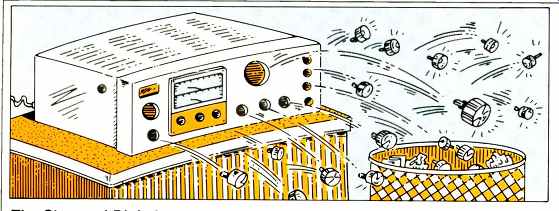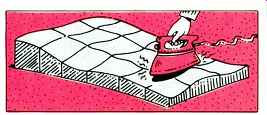No Knobs Is Good Knob

The Shape of Digital
Digital control of analog circuits is reshaping audio components. As the circuits being controlled become digital too, the process will accelerate.
Tuners have been digitally controlled for the longest time, so they show the most change. Knobs and dials have given way to up/down buttons and digital displays, better suited to digital's all-electronic, step by-step nature. Because digital circuits can be programmed to perform complex tasks, we have new functions such as seek and scan; also, station memories, easier and cheaper to implement when they hold numbers rather than dial positions or capacitances, have become more common. However, fudge-factor functions (such as the ability to tune a bit off-frequency to avoid a strong adjacent-channel signal) involve a bit of extra circuitry and therefore are fairly rare. Because digital circuitry lets us leap from one point to another, there may be a keypad for entering a station frequency directly. And because digital circuitry also permits one button to perform different functions, the station-memory buttons often double as the direct-entry keypad.
These changes are gradually being echoed in other components. Note, for example, the gradual replacement of volume knobs by up/down volume buttons in car stereos and home audio components, and the complex functions that can be programmed into CD players. There are plenty more such changes still to come.
Today's displays, for example, show only the limited information preprogrammed for it: Station-frequency numbers change, but most other information is shown by illuminating words and symbols built into the display. Tomorrow's displays may be capable of showing any words or symbols transmitted to them.
Those could include error messages ("Speaker load below 2 ohms," "Antenna disconnected," or "Signal overload"), diagnostics ("Left-channel output fuse blown"), or useful information ("104.3-WNCN Classical" or "The sidemen on this session included ...").
With digital technology, the controller need not be anywhere near the circuit controlled. One obvious result of this is remote control; we're even getting two-way systems, such as B & O's Beosystem 5500, whose controller can not only set system functions but also read and display whatever functions have been set directly or from other remotes. A less obvious benefit is that the circuit layout inside a component need no longer dictate the layout of the controls. This leaves the designer free to group controls according to the best dictates of human engineering (or to ignore ergonomics and concentrate on style).
Eventually, most of the actual signal-handling circuits may be in featureless boxes that can be kept out of sight, and all control will be remote. Cases in point include a preamp from Meitner and car-stereo systems with control heads in the passenger compartment and the works hidden in the trunk (a CD changer in Sony's case, CD and cassette changers in Alpine's). When the parts of the system we see and touch contain only control circuitry, they can get smaller, and their shapes more fanciful. On the other hand, as the signal-handling circuitry itself goes digital, it might grow small enough to fit back into the controller.
More and more, digital control and display systems are becoming simpler, cheaper, and more versatile than analog. But they're not always the best way to go. Analog meters are more precise than the crude steps of digital bar-graph displays; they're better at showing trends and easier to read when monitoring fast changes than numerical displays can be. Analog controls still beat digital at providing a smooth range of response, as in record-level and volume controls. Some of the latest remotely controlled amplifiers and receivers, I note, have abandoned up/ down volume buttons in favor of motor-driven analog volume knobs.
---------------------
Flatter Visual Response
For a year or two, we've been running "three-dimensional" graphs of power versus frequency versus distortion with some of our amplifier and receiver tests. In the future, we'll be doing more. You may, however, have noticed that the 3-D graphs in our January '87 and subsequent issues have looked a bit flatter than our previous ones. This is because we have shifted from using a linear to a logarithmic THD scale in plotting these graphs (we already used log scales in some two-dimensional graphs). Using linear scales exaggerates changes in distortion.

-------------------------
For Cryin' Out Loud
The makers of Hall's cough drops have a swell way to drum up business, at least in Japan. They hold an annual Shouting Contest, awarding 50,000 yen (nearly $300) to each year's loudest man and woman. The loudest woman in last year's contest hit 109.3 dB SPL; the loudest man reached 117.7 dB SPL. (Years ago, a researcher got even louder readings-from children.)
(adapted from Audio magazine, May 1987)
= = = =